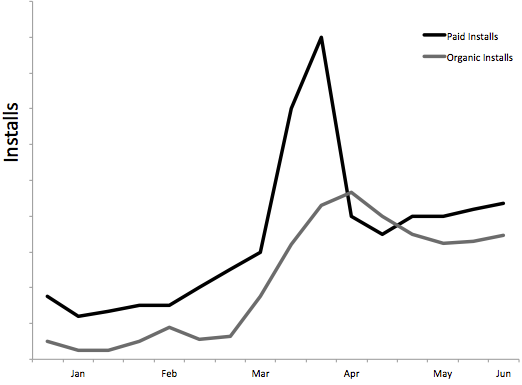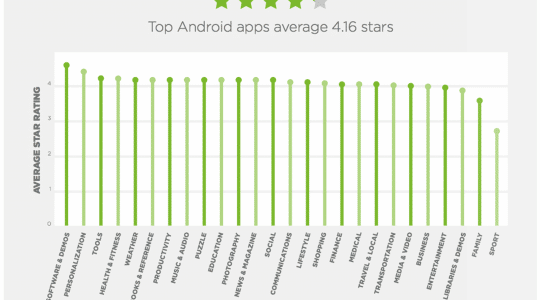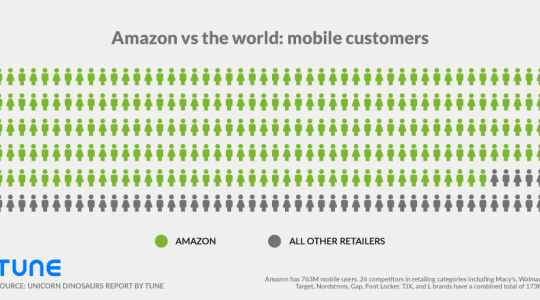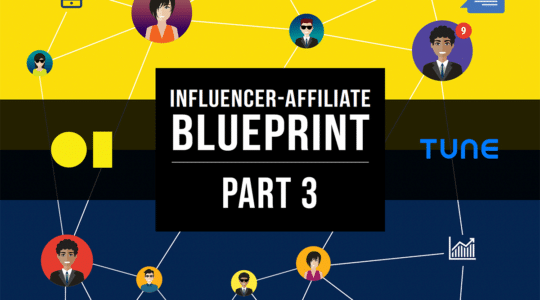Since the earliest days of mobile apps, marketers have experimented with a number of techniques and strategies in an effort to increase the visibility of their apps in app stores. Despite the basic catalog architecture, app stores have always served as a major source of user acquisition through new app discovery. The value of organic users acquired from app stores is so high that an entire industry has emerged to help apps perform well in app stores.
One common technique marketers use to drive apps up the charts is by implementing burst campaigns. A burst campaign is a mobile marketing strategy where ad spend is concentrated to a short period of time in an attempt to acquire as many users as possible.
Like other types of marketing strategies, there are pros and cons to burst campaigns. Yet over the years burst campaigns have been criticized for a variety of reasons (some of which are discussed in more detail below), leading some in the industry to abandon the practice altogether. However, if executed correctly, burst campaigns can be a major strategic tool that complements your long-term marketing efforts and helps you accomplish your goals.
This article examines the role burst campaigns play in app store discoverability, provides an overview of campaign best practices, and discusses some of the factors that lead marketers to avoid the practice.
Burst Campaigns and App Discovery
All of the major app stores organize apps into categories. In an attempt to further facilitate app discovery, app stores also provide a series of top charts that feature leading apps in each category. Getting an app listed in the top charts is typically a key priority for app publishers, as the increased visibility generally leads to considerably higher organic install rates.
With hundreds of thousands of apps available in every major app store, being featured in the top charts is incredibly challenging. There are a number of factors that impact whether an app is listed in the charts, but one of the most influential characteristics is widely believed to be the number of installs an app receives. And this is where burst campaigns are able to make a direct impact.
The theory of burst campaigns is that by concentrating ad spend in a short period of time, the spike in install volume will be significant enough to increase the ranking of the app. As the app moves up the top charts, the number of organic installs increases (due to increased visibility in the charts) to a level sufficient to maintain the top chart ranking.
Of course, results don’t always play out in exactly that manner. But here’s a visual representation of how a successful burst campaign can impact the long-term trajectory of organic installs:
Burst Campaign Best Practices
This list of best practices can help ensure that your burst campaign is a success:
1 – Consider the Timing
When to Utilize Burst Campaigns
Launching a new app – Launching an app for the first time is exciting, and running a burst campaign can help start things off on the right foot. Even if your app doesn’t immediately jump to the top of the charts, the concentrated ad spend can be the beginning of creating brand awareness.
Experiencing a lull – If your app has been experiencing an unexpected lull, a burst campaign can be a useful tool for getting things back on track.
Preparing for seasonality – It’s well-documented that app installs in the US increase fairly dramatically around holiday seasons. Users often have new devices and are looking to fill them up with apps, and a well-timed burst campaign can ensure your app is discovered.
When to Avoid Burst Campaigns
Promoting Niche Apps: Because niche apps only appeal to a specific set of users, the average user will likely not find much value in the app. A burst campaign might lead to a high volume of installs, but because the niche app isn’t broadly used, the burst may lead to a large number of uninstalls, bad reviews, and poor ratings, and ultimately be a disservice to your app store rankings.
2 – Use Multiple Ad Networks
Spreading your burst campaigns out among several ad networks will increase the probability that your ads are reaching unique users. Although there may be some inventory overlap between ad networks, working with multiple networks gives you the best chance of reaching unique users. Because your ads will be displayed by a number of publishers, you’ll also want to work with a measurement partner to ensure that you’re not being charged multiple times for a single install.
3 – Take Advantage of Analytics
Before you run a burst campaign (or any campaign for that matter) you should equip your app with appropriate analytics. Attribution analytics enable you to gain insight into where your installs are coming from, and how your users are engaging with your app. This data can be used to further optimize your campaigns in the future. Further, incorporating attribution analytics and working with a measurement partner will ensure successful performance measurements.
4 – Rotate your Creative
Constantly seeing the exact same ad can have a negative impact on your campaigns. Because burst campaigns are pushing ads out at a high volume, there is a potential for message fatigue. Prepare several different ad options and rotate the creative frequently. This way your ads will seem fresh and you’ll reduce the probability of getting annoying.
5 – Accurately Calculate ROI
The following formula can help you accurately determine the ROI on your burst campaigns:
ROI = Sum of Lifetime Value(LTV) of paid users acquired + Sum of LTV of organic users derived from the campaign – Cost of Ads bought
Why Burst Campaigns Get A Bad Rap
Potential for Poor Quality Users
The most prominent drawback to burst campaigns is the potential to produce low-quality users. However, this may not be entirely problematic. Although the paid users acquired in the burst campaign may quickly uninstall the app or carry a relatively low LTV, remember, the purpose of those installs is to move the app up the app store rankings. The increased visibility leads to a higher number of organic installs – and these organic users may end up having a high LTV.
The characterization that burst campaigns produce low-quality users is partly true – but don’t overlook the fact that they can also produce high-quality organic users.
Incentivized Ads
Burst campaigns are often fueled by incentivized ads (ads that offer the user points, digital currency, or some other reward for installing the app or completing a certain action). Many feel that incentivized ads are intentionally gaming the app store system, and consequently, the practice does not carry the best reputation.
Apple recently began cracking down on incentivized campaigns and started rejecting apps that utilized incentivized install practices. They have since softened that stance, but the general consensus is that incentivized ads will play a less notable role in the future.
In Summary
Burst campaigns may not be a valid solution for every mobile marketer, but the potential benefits (i.e. a major lift in paid users, improved app store rankings, and a higher volume of organic users) are significant, which makes the strategy worth experimenting with. Despite the reputational challenges, if burst campaigns are executed correctly they can make a positive impact on the major objectives of sustained campaigns.
For more information on how to run successful performance-based campaigns on mobile, check out our Ultimate Guide to Mobile Partner Marketing.
The next article in this series examines sustained campaigns and the role of app store optimization.
![]() This article is part of the Mobile Marketing Essentials series.
This article is part of the Mobile Marketing Essentials series.
Author
Becky is the Senior Content Marketing Manager at TUNE. Before TUNE, she handled content strategy and marketing communications at several tech startups in the Bay Area. Becky received her bachelor's degree in English from Wake Forest University. After a decade in San Francisco and Seattle, she has returned home to Charleston, SC, where you can find her strolling through Hampton Park with her pup and enjoying the simple things between adventures with friends and family.






Great article! I agree that the burst strategy is worth experimenting with. Have you heard of Appgo2market ? They write about app marketing and they write quite a bit about burst…